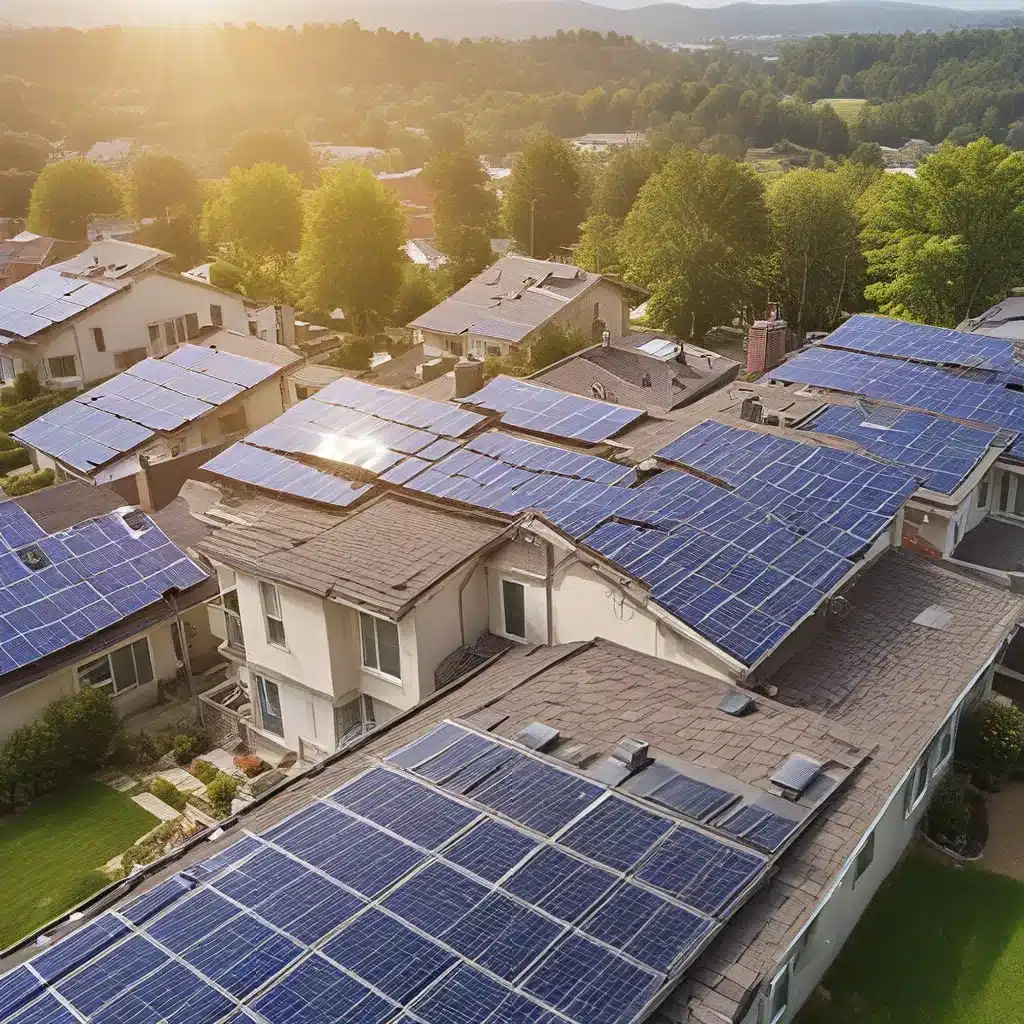
Understanding Your Solar Potential
When it comes to harnessing the power of the sun, not all homes are created equal. The first step in maximizing your solar savings is to understand your home’s solar potential. This means evaluating factors like your location, roof orientation, and shading that can impact the amount of sunlight your panels receive.
Luckily, there are some handy online tools that can help you assess your home’s solar viability. Services like Google’s Project Sunroof can give you a personalized estimate of your potential solar energy production and expected savings. By plugging in your address, they’ll analyze factors like your roof size, pitch, and nearby obstructions to determine how much solar power you could generate.
Once you have a sense of your solar potential, it’s time to start thinking about the best way to finance your solar investment. There are several options to consider – you can choose to purchase the panels outright, enter into a loan agreement, or even lease them through a third-party provider. Each approach has its own pros and cons, so it’s important to do your research and find the right fit for your situation and budget.
Optimizing Solar Panel Placement
Orientation and Angle are crucial factors in maximizing the efficiency of your solar panels. In North America, south-facing installations generally receive the most consistent sunlight throughout the day. But even east or west-facing panels can still be effective if angled properly.
As a general rule, your panels should be tilted at an angle close to the latitude of your location. This helps ensure optimal exposure to the sun’s rays year-round. Consulting with a professional installer is the best way to determine the ideal orientation and tilt for your specific setup.
Another key consideration is shading. Even small areas of shade can significantly impact your solar panel’s energy production. When choosing a location for your system, be sure to avoid obstructions like trees, buildings, or other structures that could cast shadows on your panels.
Maintaining Peak Performance
Once your solar panels are installed, you’ll want to keep them in tip-top shape to ensure they’re operating at maximum efficiency. Regular cleaning is essential – dirt, dust, and debris can accumulate over time, blocking sunlight and reducing power output.
In most cases, a simple rinse with a garden hose should do the trick. But if you’ve got some stubborn grime, you can gently use a mild soap and water solution to get them sparkling clean. Aim to clean your panels at least once or twice a year, or more frequently if you live in an especially dusty or pollen-heavy area.
Another way to maintain peak performance is by monitoring your system’s output. Most modern solar inverters come with connected software that allows you to track real-time data on electricity production, consumption, and any potential issues. By keeping a close eye on your system’s performance, you can quickly identify and address any problems that arise.
Maximizing the Solar Advantage
One of the best ways to get the most out of your solar investment is to strategically time your energy usage. Solar panels produce varying amounts of electricity throughout the day, with peak production typically occurring during midday hours. By running major appliances or doing energy-intensive tasks like laundry or charging your electric vehicle during these high-output periods, you can maximize the amount of solar energy you consume directly, reducing your reliance on the grid.
Of course, energy storage is another powerful tool in the solar optimization toolkit. By pairing your solar panels with a battery backup system, you can store excess energy generated during the day for use in the evening or during power outages. This helps you get even more mileage out of your renewable energy source and further reduce your utility bills.
Tapping into Solar Incentives
The upfront cost of solar installation can be a significant barrier for some homeowners. But the good news is that there are a variety of incentives and rebates available to help offset these expenses.
The federal Investment Tax Credit (ITC) is one of the most well-known solar incentives, allowing you to deduct a percentage of your system’s cost from your taxes. This credit was recently extended through 2035 and even expanded to include standalone battery storage systems.
Many states, local governments, and utility companies also offer their own solar incentive programs in the form of rebates, performance payments, or net metering policies. Doing your research and taking advantage of all the available financial incentives can make a big difference in your solar return on investment.
The Long-Term Payoff
While the initial investment in solar panels may seem daunting, the long-term benefits are undeniable. Solar energy systems have an expected lifespan of over 30 years, meaning they’ll continue to generate cost savings and environmental benefits for decades to come.
Studies have even shown that homes with solar panels tend to have higher resale values than those without. The added value that a solar installation brings can be a significant financial boon, especially for those who may be considering selling their home down the line.
So, whether you’re looking to save money on your energy bills, reduce your carbon footprint, or boost your home’s equity, investing in solar is a smart move that can pay dividends for years to come. By following the strategies outlined in this article, you’ll be well on your way to maximizing the solar savings and unlocking the full potential of your renewable energy system.
Ready to take the next step? Explore our solar panel installation services and let us help you harness the power of the sun for your home or business.

